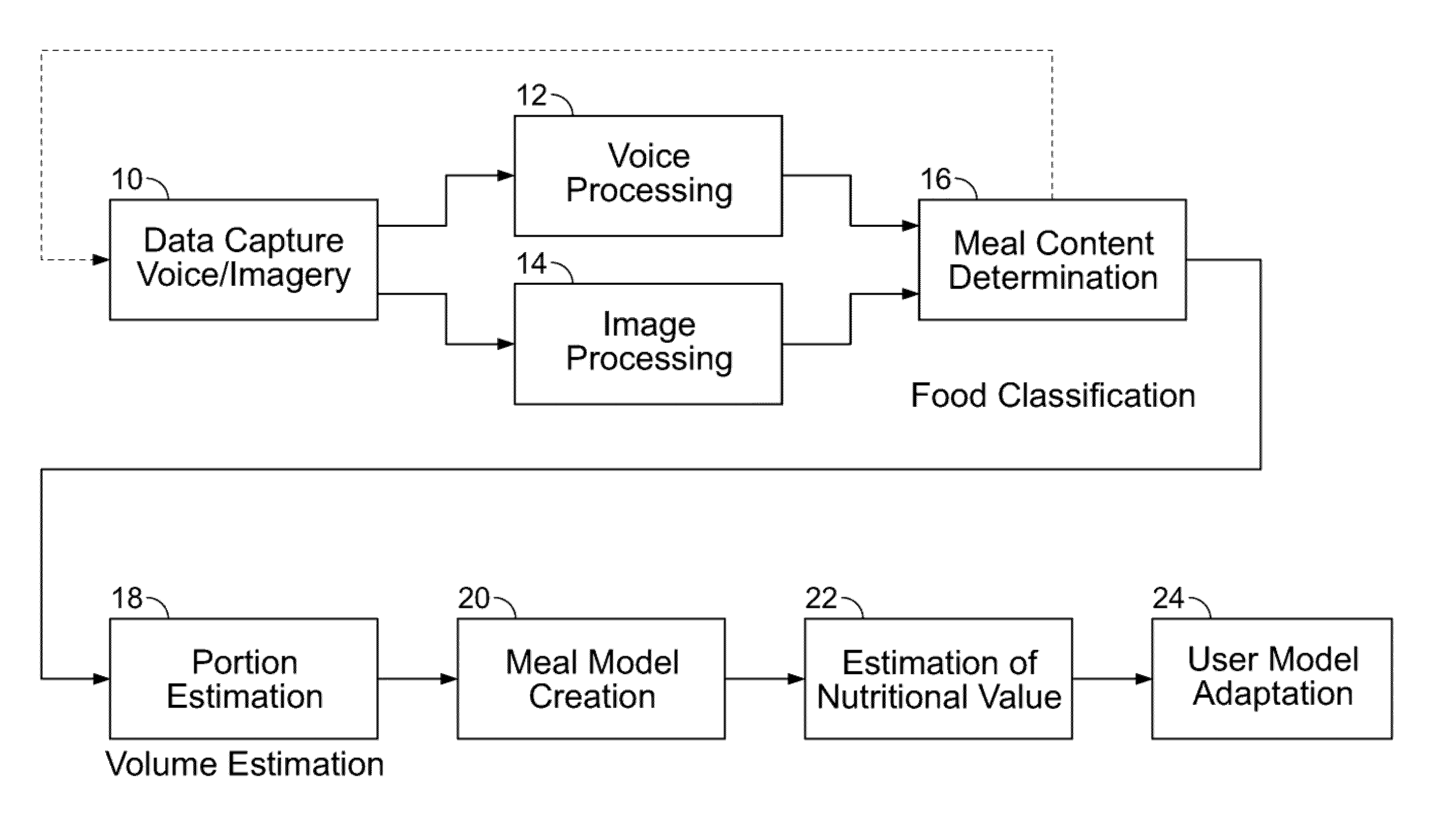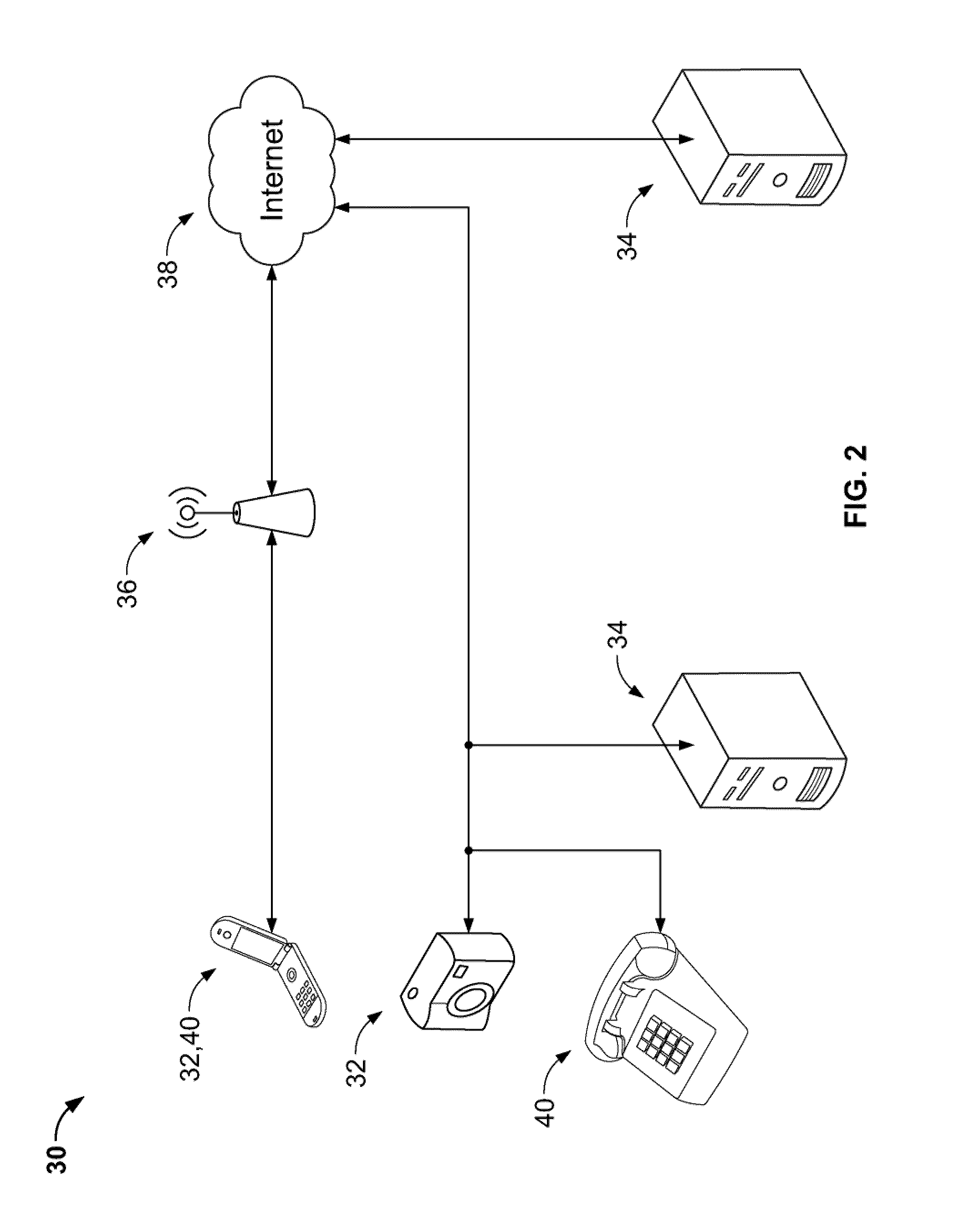Food recognition using visual analysis and speech recognition
a visual analysis and speech recognition technology, applied in the field of vision systems, can solve the problems of poor dietary intake assessment by individuals, difficult to estimate the caloric content of meals, and poor volume estimation
- Summary
- Abstract
- Description
- Claims
- Application Information
AI Technical Summary
Benefits of technology
Problems solved by technology
Method used
Image
Examples
Embodiment Construction
[0031]FIG. 1 is a process flow diagram illustrating exemplary modules / steps for food recognition, according to an embodiment of the present invention. FIG. 2 is an exemplary hardware architecture of a food recognition system 30, according to an embodiment of the present invention. Referring now to FIGS. 1 and 2, in data capturing module 10, visual and audio and / or text data are captured pertaining to a plate of food. According to a preferred embodiment of the present invention, a plurality of images of a food plate, preferably at least three images, are taken by an image capturing device 32. The image capturing device 32 may be, for example, a cell phone or smart phone equipped with a camera, a laptop or desktop computer or workstation equipped with a webcam, or any camera operating in conjunction with a computing platform. In a preferred embodiment, the images are either directly transferred to an image and voice processing server / computer 34 comprising at least one processor direc...
PUM
 Login to View More
Login to View More Abstract
Description
Claims
Application Information
 Login to View More
Login to View More - R&D
- Intellectual Property
- Life Sciences
- Materials
- Tech Scout
- Unparalleled Data Quality
- Higher Quality Content
- 60% Fewer Hallucinations
Browse by: Latest US Patents, China's latest patents, Technical Efficacy Thesaurus, Application Domain, Technology Topic, Popular Technical Reports.
© 2025 PatSnap. All rights reserved.Legal|Privacy policy|Modern Slavery Act Transparency Statement|Sitemap|About US| Contact US: help@patsnap.com



